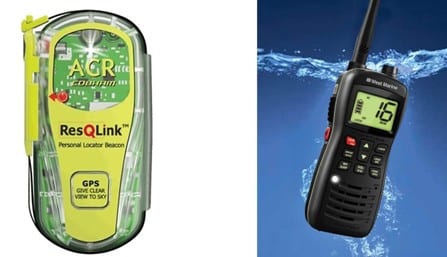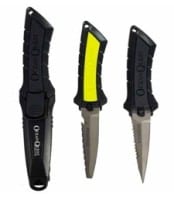 By Bob Currie, Vessel Examiner
By Bob Currie, Vessel Examiner
United States Coast Guard Auxiliary Flotilla 081-06-08
USCG Auxiliary Flotilla 081-06-08 is based at Coast Guard Station Galveston. The Auxiliary’s vessel examiners perform safety checks on all types of recreational boats. The U.S. Coast Guard Paddle Craft Vessel Safety Check (VSC) has many recommendations for paddle craft operators. Although many of these recommendations may seem obvious, they are part of the VSC because too many boaters fail to heed the advice and are lost in the process. More paddle craft operators drown than any other type of recreational boater (source: U.S. Coast Guard).
OPEN WATER RECOMMENDATIONS
Because paddle craft operators do venture many miles from shore, the Coast Guard has some basic recommendations for these adventurous operators.
Pump or Bailer
This recommendation applies to sit inside paddle craft (canoes and kayaks). Wave action, even on a relatively calm day, is likely to enter a sit inside paddle craft, and swamping of such craft is almost a given in the open seas. Living at the beach, I see this on a daily basis during the summer months. I would never recommend a canoe for use in the surf, but they are out there. If you just have to put that canoe in the Gulf of Mexico, be sure to have some means of bailing the water out, and make sure your bail is fastened to the craft so that it doesn’t float away.
Spray Skirt
I have both a sit inside and a sit on top kayak. I will launch my sit inside kayak in the bay on occasion. It has internal flotation, but can still be swamped to the point where it is not maneuverable. To prevent that from happening, I use a spray skirt that makes a seal between me and the body of the kayak. The spray skirt does prevent water from entering the kayak, but it also makes exiting the kayak in the event of being capsized a very difficult process. If you use a spray skirt, you need to practice extricating yourself from a capsized kayak, preferably in a swimming pool with someone to help you if you get into trouble. Spray skirts have a grab loop on them to help with the extrication process, but you must make sure that it is not tucked into the skirt each time you use it.
Spare Paddle/Oars
This recommendation is for all paddle craft whose operators plan to venture far from shore. I was on a 4-mile paddle off shore once when one of my paddle blades split. I had a spare paddle on board. Otherwise, it was going to be a rough paddle back to shore with a one-bladed kayak paddle. It is also important to have a safety line attached to your paddle. It is so easy for a paddle to slip off into the water and float quickly out of reach or even sink. I also use safety lines on my fishing rods and tackle box. Those can disappear just as easily when a rogue wave rocks your paddle craft.
Compass/GPS
If you venture out far enough into the gulf, you will lose sight of land. Please don’t use the sun for navigation. It doesn’t work well at all. You should have a compass at the least, and take a heading on that compass as you depart the shore. Many a navigator has failed to take notice that the land mass he is searching for runs more north to south than east to west and paddled parallel to the shore rather than back to it. A GPS is nice to have, but electronics can fail, especially when they are constantly exposed to waves breaking over the paddle craft. You can’t use the direction of the waves as a reliable guide back to shore either, as they also can run parallel to the beach.
Kayak Throw Bag
A throw bag is a bag that contains a coiled rope that can be used to rescue a boat or a person in the water. Throwing a bag from the cockpit of a sea kayak is a little different than throwing one from the shore, especially when trying to juggle a paddle and waves. The best throw is overhand, and it’s often helpful to clip the end of throw bag’s line to your kayak. Clipping it to your kayak relieves you of worrying about loosing it as you toss it out.  Often having a partner raft up for stability will allow you to throw the rope much further. A throw bag is most useful to rescue someone who has ventured too close to the rocks and is in danger of being tossed onto the rocks. Rather than kayaking in close to effect a rescue, the rescuer can help preserve his or her own safety by throwing a tow bag to the person in danger. Sitting down in the kayak also makes it harder to get a good throw. Expect the throw to land 30 to 35 feet away from you. And this is something you’ll want to practice before having to use it in a real situation.
Often having a partner raft up for stability will allow you to throw the rope much further. A throw bag is most useful to rescue someone who has ventured too close to the rocks and is in danger of being tossed onto the rocks. Rather than kayaking in close to effect a rescue, the rescuer can help preserve his or her own safety by throwing a tow bag to the person in danger. Sitting down in the kayak also makes it harder to get a good throw. Expect the throw to land 30 to 35 feet away from you. And this is something you’ll want to practice before having to use it in a real situation.
Once you have contact with the swimmer, they should turn their boat rightside up and either clip the rope to their boat, or hang on to both the rope and their kayak as they’re pulled to safety. The rescuer can retrieve the rope while pulling the paddler out, or tow the kayaker out by having the rope clipped to the kayak. Keep in mind restuffing a throw bag while retrieving the rope leaves the swimmer in danger longer and having loose rope near you puts you in danger.
Marine Radio/Personal Locator Beacon (PLB)
I never venture out onto the water without my marine radio. I have a walkie talkie style radio like the one below that I can clip to my life jacket, and it is waterproof. If you are going to get serious about sea kayaking, then you really should invest in a personal locator beacon (PLB). A PLB guides rescuers to within 100 meters or less of your position and in the U.S with a GPS enabled PLB, Search and Rescue personnel are typically notified of your position in as little as 5 minutes of activation.

The PLB is also attached to your life jacket and many are activated automatically when submersed in water. Needless to say you need to wear that life jacket when operating a paddle craft. None of your personal protective equipment works if it is not used as prescribed.
Knife
Make that a readily available knife. You can’t use it if you can’t reach it. A belt worn knife is preferable. I recommend a knife that has both a sharp edge and a serrated edge, as well as a hooked line cutter.  A diver’s knife is perfect for the job and that is what I use. It has a plastic scabbard, can be legally worn, and has a push button release so that it isn’t easily lost. I once hooked a decent sized hammerhead shark from my kayak, and I could not break my line. The shark kept running hard and changing directions, and that threatened to capsize my kayak. I remembered my dive knife and cut my line before he could capsize my boat. A three inch blade is both legal to wear and all you should need. In Texas, knives with blades less than 5.5 inches may be worn anywhere except for a few restricted locations. See Texas Penal Code section 46.03 for a list of those locations.
A diver’s knife is perfect for the job and that is what I use. It has a plastic scabbard, can be legally worn, and has a push button release so that it isn’t easily lost. I once hooked a decent sized hammerhead shark from my kayak, and I could not break my line. The shark kept running hard and changing directions, and that threatened to capsize my kayak. I remembered my dive knife and cut my line before he could capsize my boat. A three inch blade is both legal to wear and all you should need. In Texas, knives with blades less than 5.5 inches may be worn anywhere except for a few restricted locations. See Texas Penal Code section 46.03 for a list of those locations.
For more information on boating safety, please visit the Official Website of the U.S. Coast Guard’s Boating Safety Division at www.uscgboating.org. Questions about the U.S. Coast Guard Auxiliary or our free Vessel Safety Check program may be directed to me at [email protected]. I am available to perform free Vessel Safety Checks, and I will come to your location to perform them. SAFE BOATING!
[1-8-2018]

 Posted in
Posted in 























